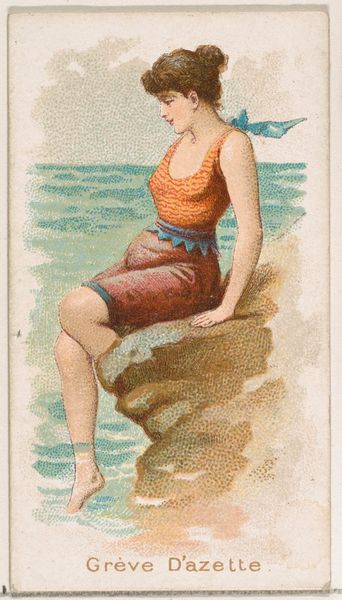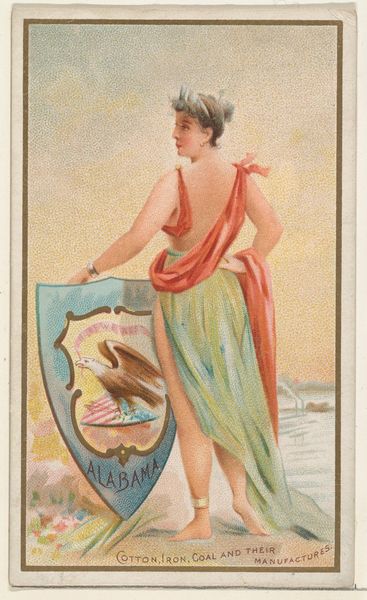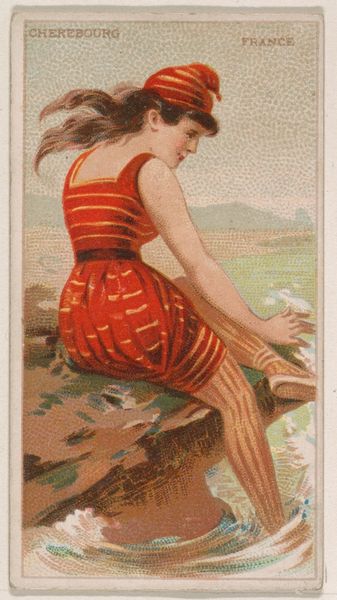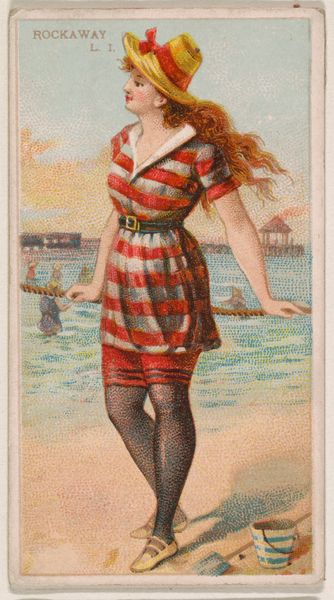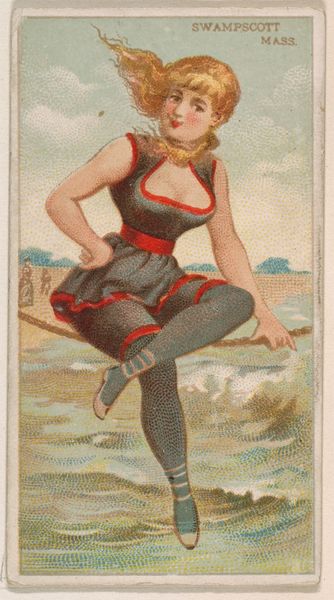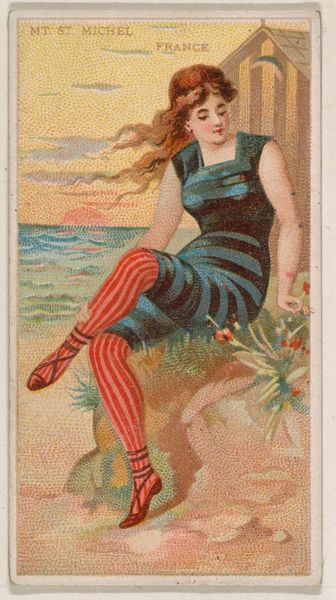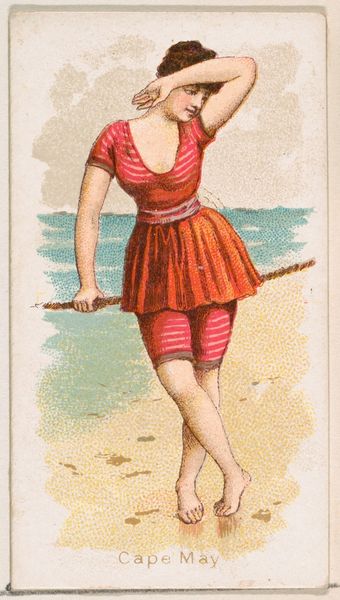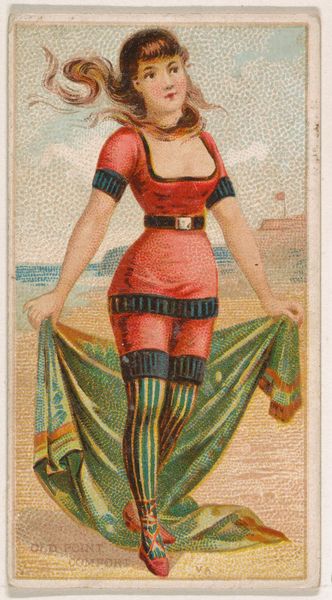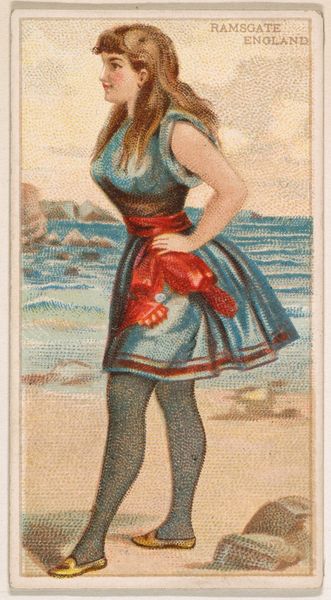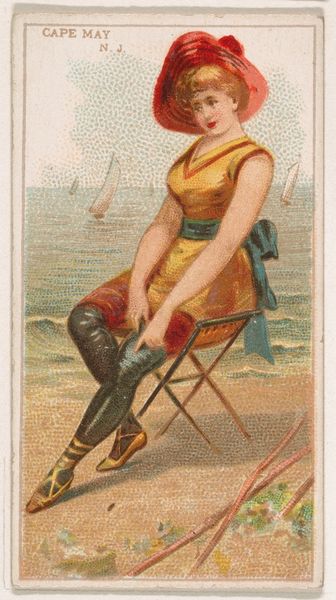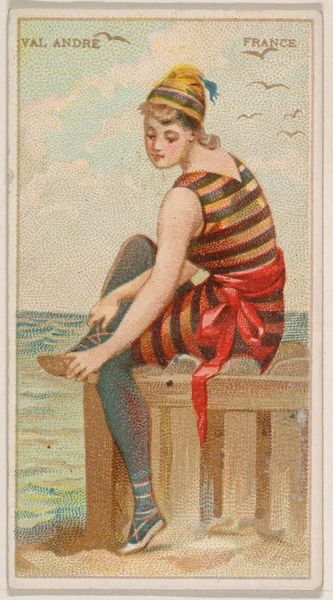
St. Malo, France, from the Surf Beauties series (N232), issued by Kinney Bros. 1889
0:00
0:00
drawing, lithograph, print, photography
#
portrait
#
drawing
#
lithograph
# print
#
photography
#
genre-painting
#
portrait art
#
watercolor
Dimensions: Sheet: 2 3/4 × 1 1/2 in. (7 × 3.8 cm)
Copyright: Public Domain
Editor: This is "St. Malo, France," from the Surf Beauties series by Kinney Brothers, created around 1889. It seems to be a lithograph print. I’m immediately struck by the vibrant colors and the subject’s somewhat confrontational gaze. How should we interpret this piece today, given its history as a tobacco card? Curator: That’s a crucial question to start with. Tobacco cards were mass-produced objects, often featuring idealized images of women, but their circulation coincided with expanding colonialism and exploitative labor practices. This image, therefore, isn't just a pretty picture of a woman at the beach. It participates in the commodification of leisure, and even of femininity itself. What do you notice about her clothing and pose? Editor: She's wearing a bathing costume but seems almost overdressed, with ribbons and elaborate shoes. The pose feels staged rather than natural, like she's performing for someone. Curator: Exactly! The "Surf Beauties" series presents women as objects of spectacle, fitting neatly into a male gaze. Furthermore, we need to consider the imperial context. "France" is boldly proclaimed at the top, suggesting a connection between the desirability of the woman and the allure of French culture and territory. It’s an intersection of gender, class, and colonial power. Editor: So, even something that appears as simple advertising carries significant cultural baggage. It is much more than commercial portraiture. Curator: Precisely. We need to critically examine how images like these perpetuate power structures and shape our understanding of beauty and place. These were widely distributed, shaping perceptions for a broad audience. Editor: I see now. It challenges me to question the hidden narratives embedded within even seemingly innocent images. I didn't realize so much could be gleaned from something originally intended to sell tobacco! Curator: That critical lens allows us to excavate deeper truths about history and its lingering impact on the present.
Comments
No comments
Be the first to comment and join the conversation on the ultimate creative platform.
